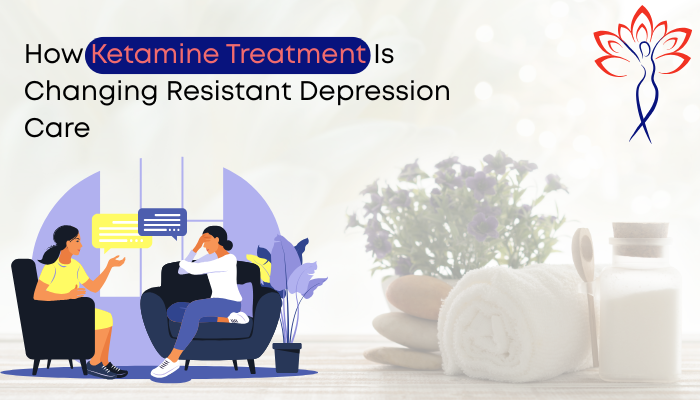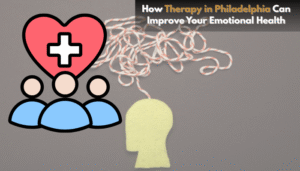How Ketamine Treatment Is Changing Resistant Depression Care
When Sarah walked into her first ketamine treatment session, she had nearly lost hope. After trying six different antidepressants over...

When Sarah walked into her first ketamine treatment session, she had nearly lost hope. After trying six different antidepressants over a decade, with minimal results, she was told she had “treatment-resistant depression.” Her therapist mentioned ketamine almost offhandedly, and out of desperation more than curiosity, she gave it a try.
Three sessions later, Sarah described feeling a lightness she hadn’t experienced in years.
Her story isn’t rare anymore.
In 2025, ketamine treatment is no longer seen as experimental or fringe. It’s quickly becoming a transformative option for people who feel like they’ve tried everything. But what exactly is ketamine therapy, how does it work, and how long does ketamine work for depression?
Let’s break it down.
What Is Ketamine Treatment?
Originally used as an anesthetic in surgical settings, ketamine has taken on a new role in mental health care over the last two decades. Unlike traditional antidepressants- which target serotonin and take weeks to kick in, ketamine works on the brain’s glutamate system, specifically the NMDA receptor. This leads to increased neuroplasticity, or the brain’s ability to form new connections.
In short: ketamine treatment helps “reset” the brain.
There are a few common ways ketamine is administered:
- IV Infusion: The most common clinical method.
- Intramuscular Injection: A one-time shot.
- Lozenges (Oral Ketamine): Often used for at-home maintenance.
- Nasal Spray (Spravato): FDA-approved for treatment-resistant depression.
Most ketamine therapy programs combine medication sessions with talk therapy, also known as ketamine-assisted psychotherapy (KAP), to help patients process the experience and integrate insights into their daily lives.
Why Traditional Antidepressants Aren’t Enough
Let’s face it: the current system of treating depression often leaves people stuck in cycles of trial and error. For many, it can take years to find a medication that even slightly helps.
According to the National Institute of Mental Health, around 30% of people with major depressive disorder are considered treatment-resistant, meaning they don’t respond to at least two different types of antidepressants.
That’s where ketamine treatment steps in as a powerful alternative.
How Long Does Ketamine Work for Depression?
This is one of the most common- and important- questions people ask when considering ketamine. The answer? It depends.
Initial Response:
Many patients feel an improvement in mood, clarity, or emotional relief within hours to a day after their first or second session. This rapid onset makes it particularly helpful for individuals with suicidal thoughts or acute depressive episodes.
Short-Term Duration:
A single session’s effects can last from a few days up to two weeks. Most clinics recommend a “loading phase” of six treatments over 2–3 weeks to build a therapeutic baseline.
Long-Term Maintenance:
To sustain the benefits, patients often return for booster sessions every 2–6 weeks, depending on individual response. Some may also use oral ketamine between infusions as part of a personalized plan.
What Impacts the Duration?
Several factors affect how long ketamine works for depression, including:
- The severity and duration of the depression
- Coexisting mental health conditions (like anxiety or PTSD)
- Integration therapy and lifestyle support
- Biological differences in ketamine metabolism
In other words, while ketamine can offer fast relief, it’s most effective as part of a comprehensive mental health strategy.
The Science Behind Ketamine’s Effects
You might be wondering: how can a drug work so fast, especially when most antidepressants take weeks?
Here’s the simplified science:
- Ketamine blocks the NMDA receptor, a key part of the brain’s glutamate system.
- This triggers the release of brain-derived neurotrophic factor (BDNF), which helps neurons grow and communicate.
- The result? Improved neuroplasticity, which allows new thought patterns and emotional resilience to form.
It’s like hitting “reset” on the brain’s stress response-and giving therapy a better chance to work.
Who Is Ketamine Treatment For?
Ketamine treatment isn’t for everyone, but it can be life-changing for the right candidates. It’s most commonly used for:
- Treatment-resistant depression
- Major depressive disorder
- Post-traumatic stress disorder (PTSD)
- Bipolar depression (with careful monitoring)
- Severe anxiety
- Chronic suicidal ideation
It’s not typically recommended for individuals with a history of psychosis, uncontrolled high blood pressure, or certain substance use disorders-so screening is essential.
What Does a Ketamine Session Feel Like?
Experiences vary, but most people report:
- A sense of mental detachment or “floating”
- Vivid imagery or dreamlike thoughts
- Emotional breakthroughs
- A sense of peace or spaciousness
Some describe it as being outside their body or watching their thoughts from a distance—allowing them to view trauma or depression with less emotional charge.
These altered states can be deeply therapeutic, especially when guided by a trained therapist in ketamine-assisted psychotherapy.
Real-World Story: “I Could Finally Breathe”
John, 42, had lived with chronic depression since college. Medications dulled the pain, but also dulled everything els-joy, creativity, even motivation. After a referral to a ketamine clinic, he hesitated. “It felt too experimental,” he said.
But after just two sessions, he noticed something different.
“I was walking through the park and realized I wasn’t bracing for the worst. I could breathe. It wasn’t a miracle, but it was the first time I believed things could change.”
That kind of shift is exactly why ketamine treatment is gaining recognition- not as a cure, but as a catalyst.
Risks and Side Effects to Know
No treatment is without risk. Common (but temporary) side effects include:
- Nausea
- Dizziness
- Fatigue
- Mild hallucinations or disorientation
- Increased blood pressure (during session)
Most side effects resolve within an hour or two. The risk of dependency is low when ketamine is used in a clinical setting and monitored properly.
The Future of Depression Treatment
As we move into 2025, ketamine treatment is being integrated into more mainstream care models. Insurance coverage is expanding. Research is booming. And more mental health professionals are receiving training in ketamine-assisted therapy.
At its core, this shift represents a new way of thinking-one that moves away from numbing symptoms and toward deep, neurological healing.
Final Thoughts
If you or someone you love is living with depression that just won’t lift, it’s okay to feel frustrated. It’s okay to feel skeptical. But it’s also okay to hope.
Because ketamine treatment is opening doors where many thought there were none left.
For those in the Mid-Atlantic, options are growing. If you’re researching or ready to take the next step, exploring a Philadelphia ketamine treatment center might be the first move toward healing that actually feels like healing.
No treatment is perfect. But for many, this one is personal, and powerful.
Click –thenewsus.com





